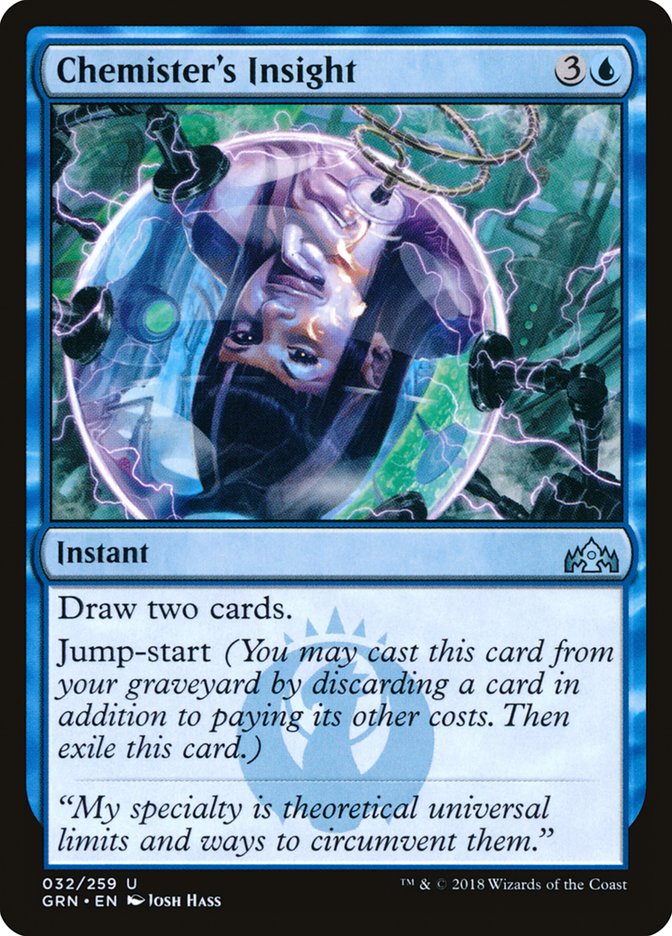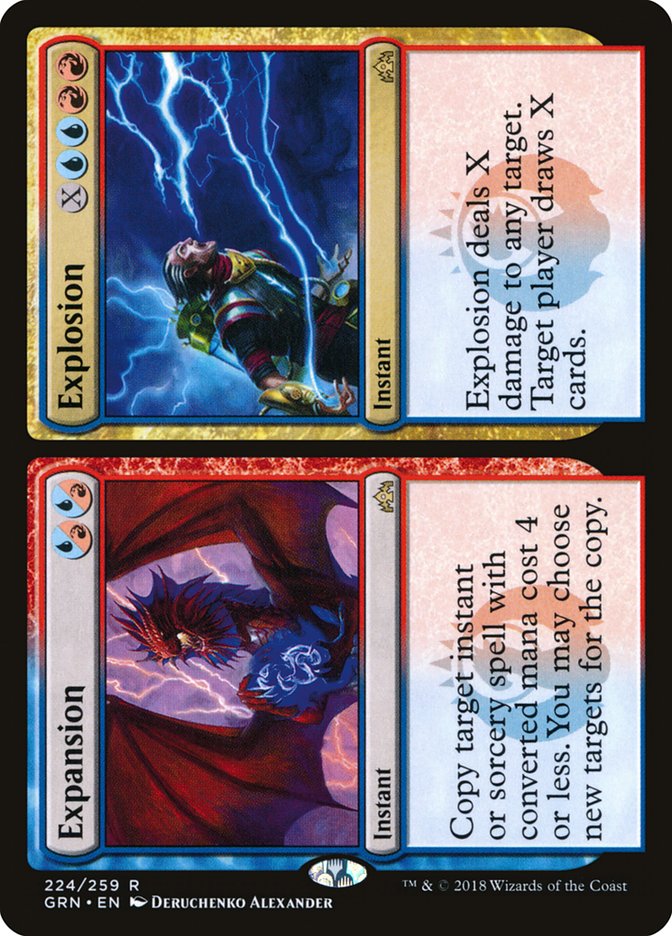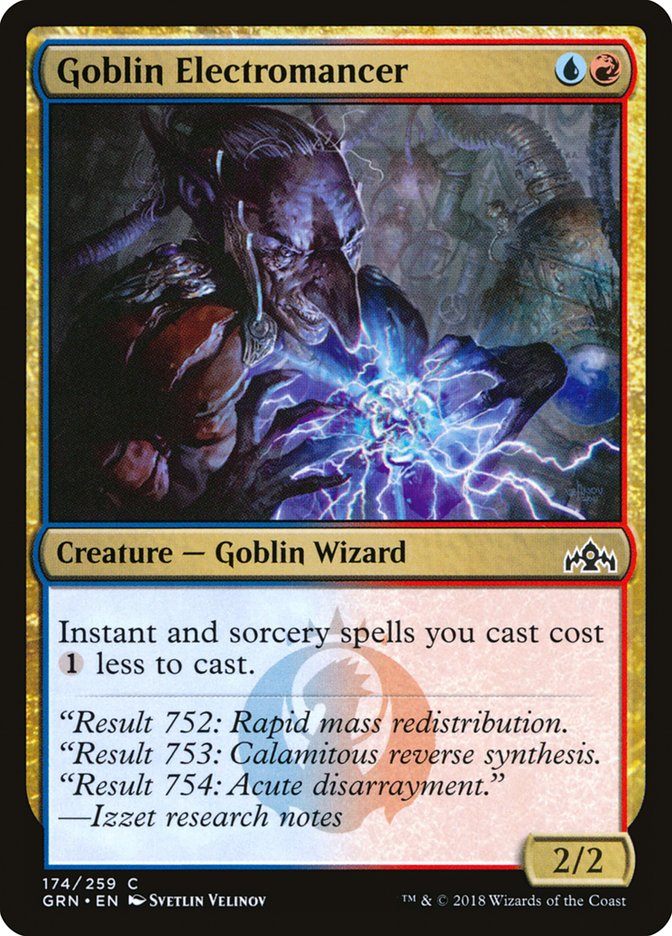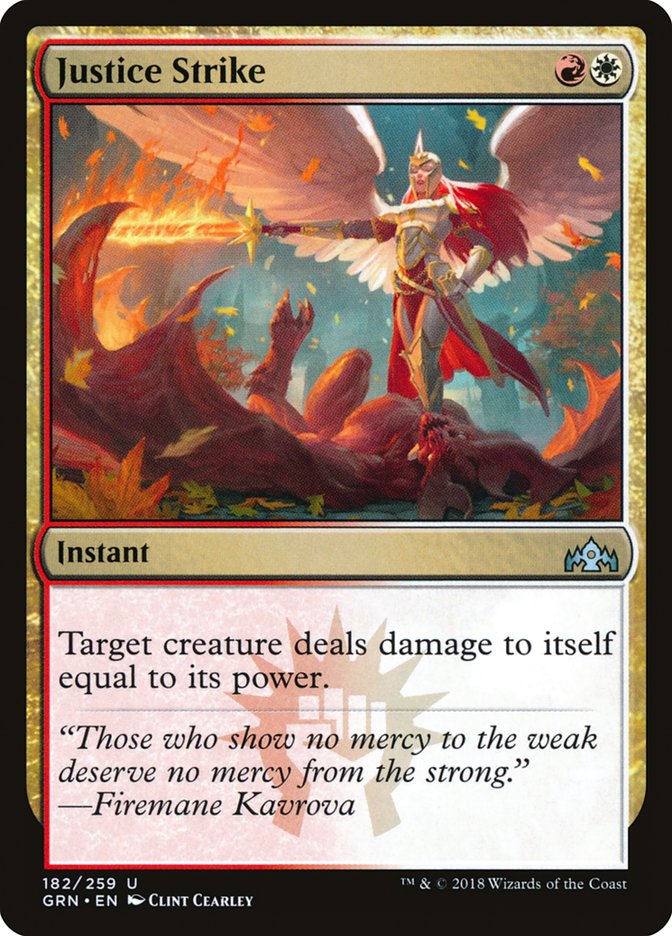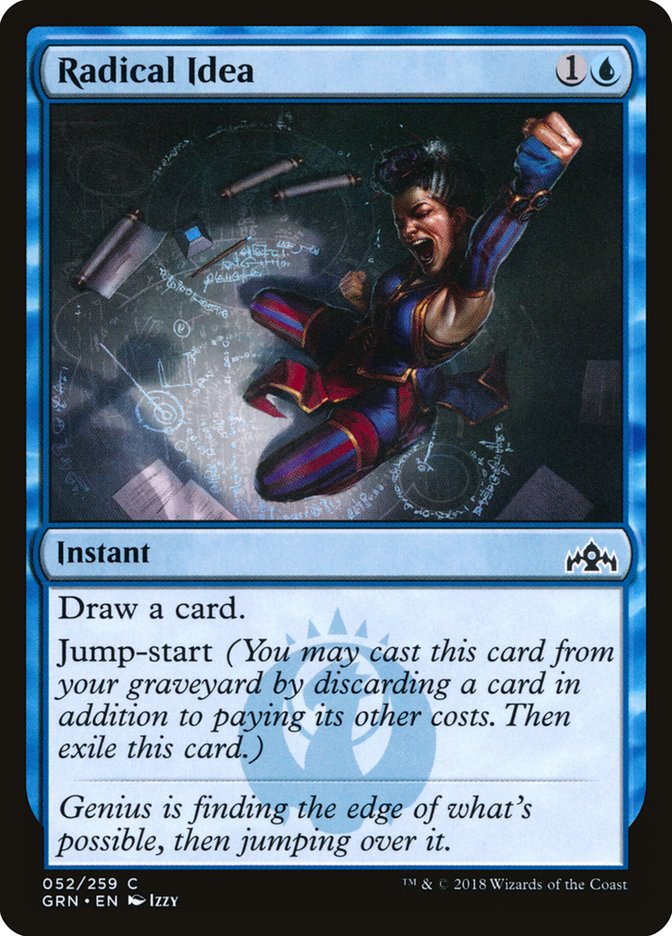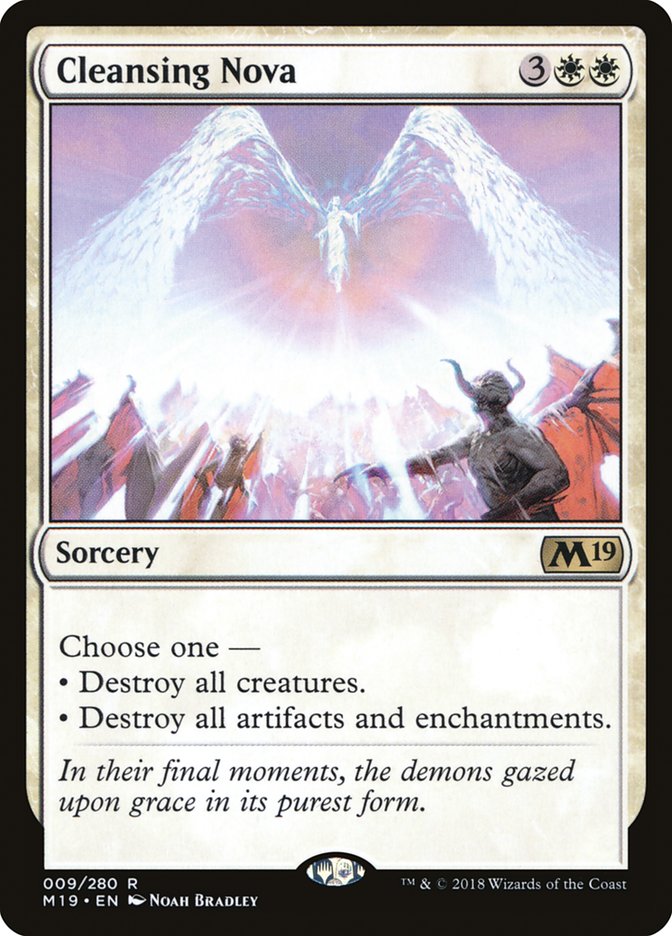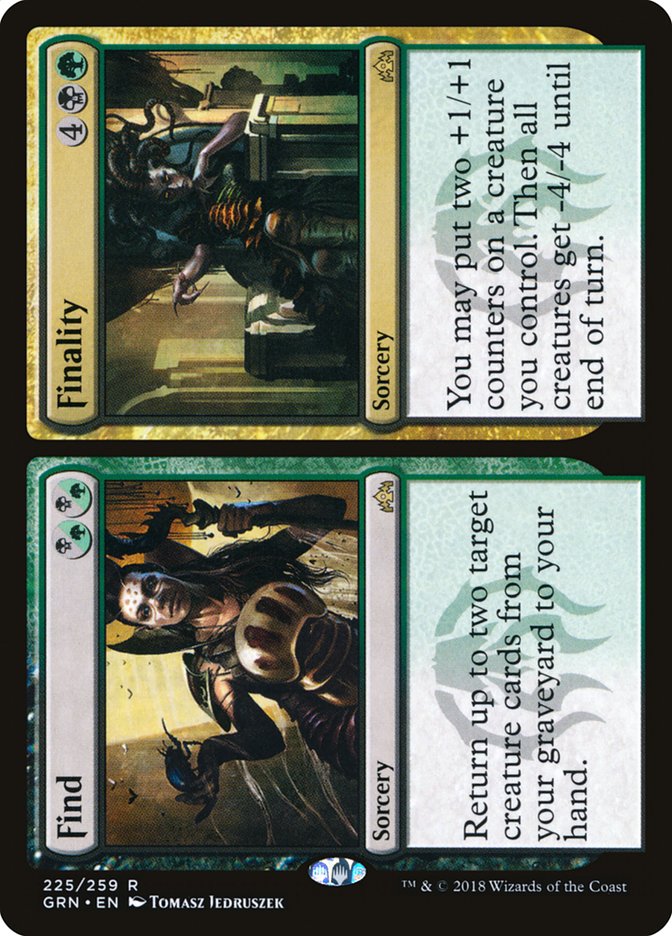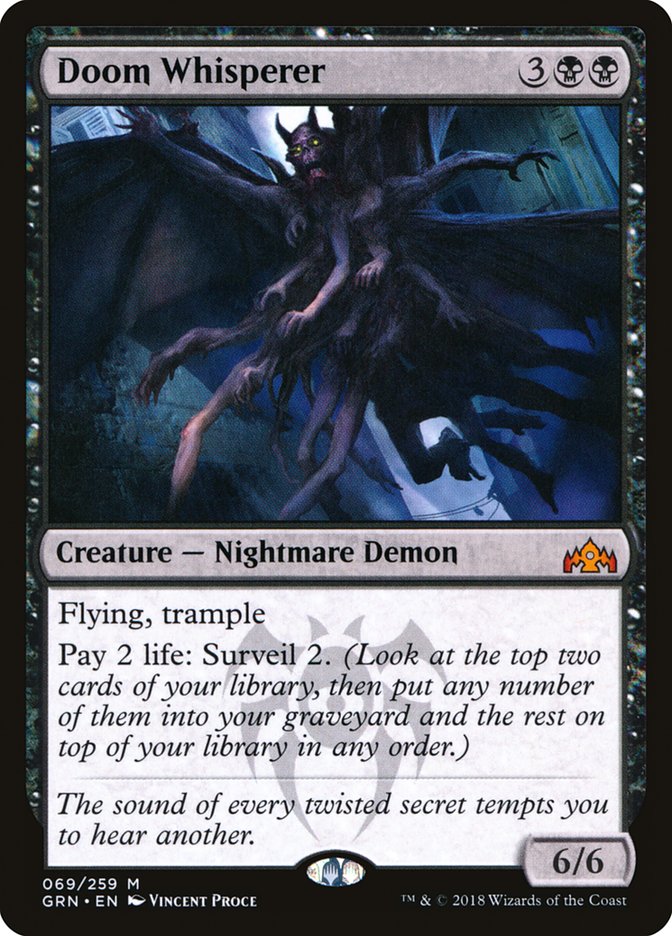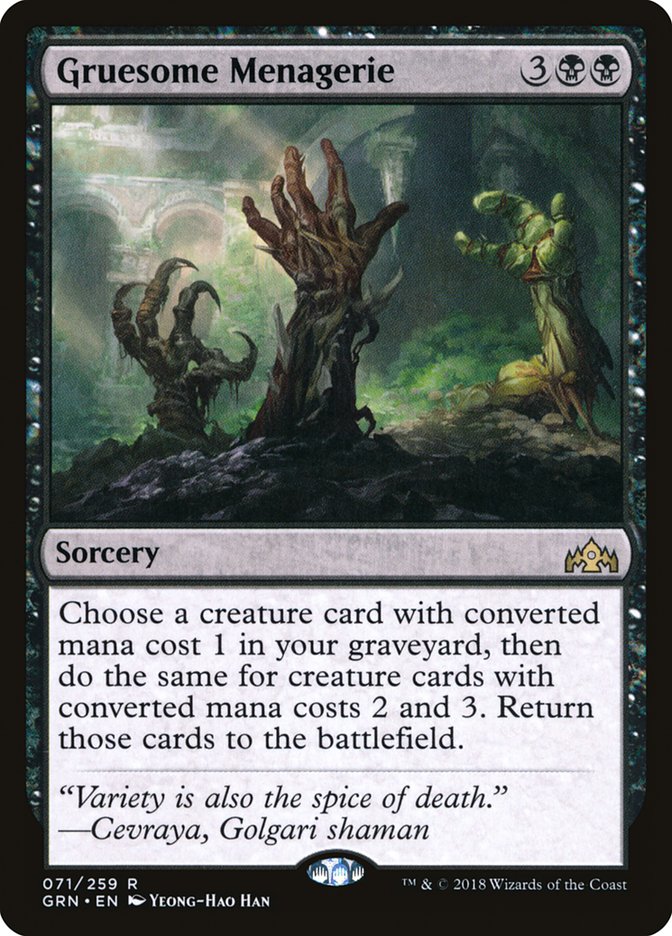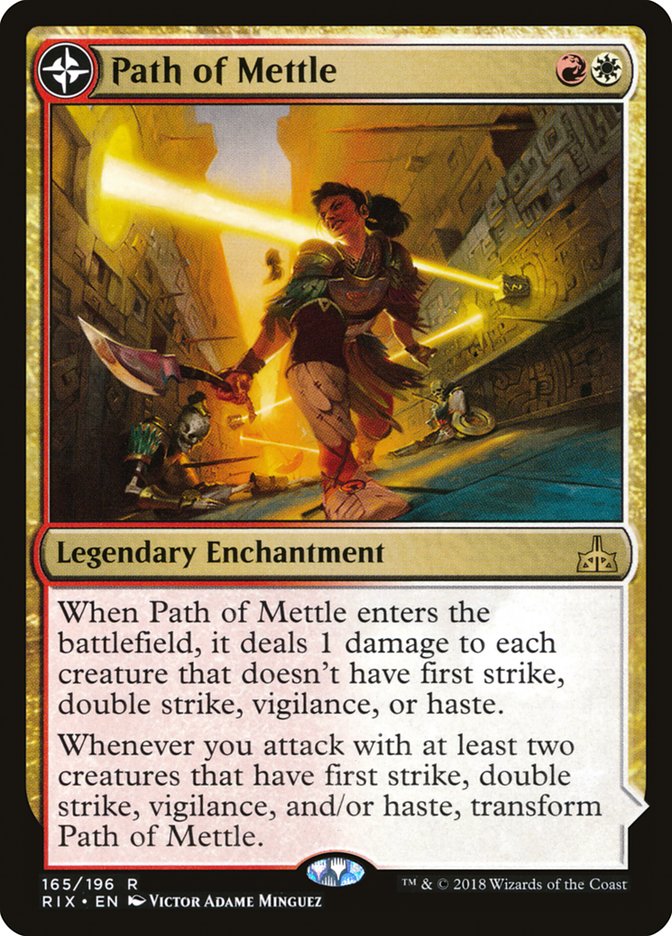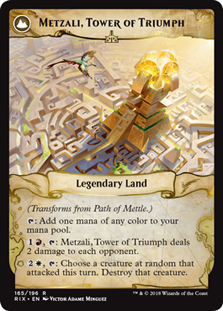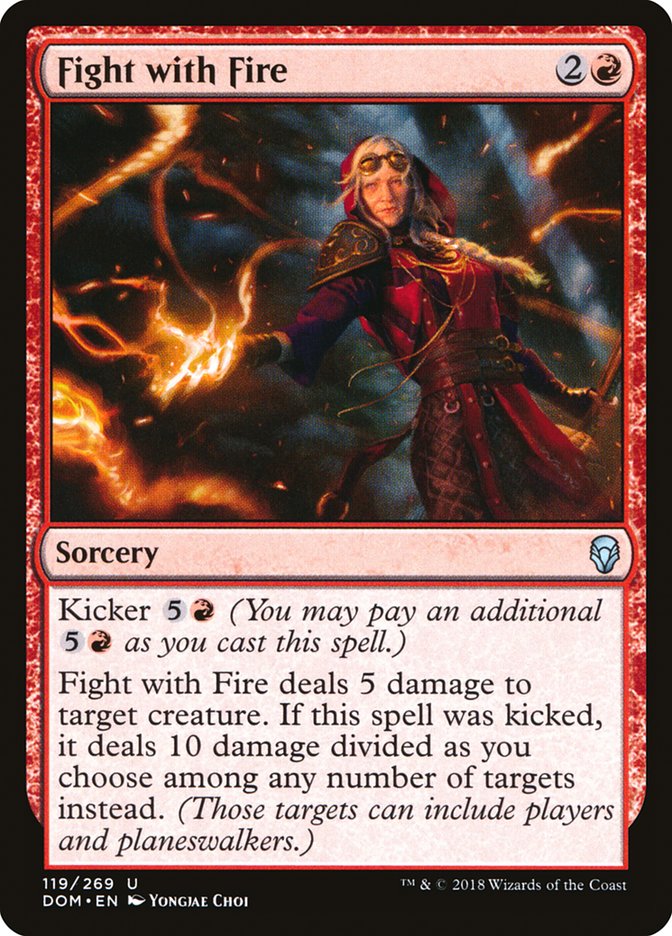Between VS Live! and Guilds of Ravnica hitting Magic Online
earlier than the paper release, I’ve had a chance to play a ton of the new
Standard format in the last few weeks. My main focus, as per usual, was on
Izzet strategies, pushing them as hard as I could without becoming too
reliant on one card or another to do most of the heavy lifting. Variants I
tried with maindeck Firemind’s Research didn’t pan out so well. Others
featuring a more aggressive slant with Enigma Drake and Ghitu Lavarunner
also felt like I was a completely different format than my opponents. While
I was trying to put together these minor positive interactions, they were
small-balling me with The Flame of Keld or going way over the top with
Teferi, Hero of Dominaria.
Because I couldn’t quite find the right Izzet list and I was afraid of
losing to Selesnya Tokens in the first week of Guilds of Ravnica
Standard, I let Jim Davis take the Standard reins and play his bread and
butter: Azorius Control. Of course, we don’t have cards from the Azorius
Senate in Standard yet, as that will come in Ravnica Allegiance,
but Teferi, Hero of Dominaria and all the rest of the gang is still here,
and still pretty good. Plus, you get quite a few blue cards from Izzet that
give your control deck a bit of a boost.
Building Blue
I’m under the impression that virtually every blue deck, control or
otherwise, should be playing four copies of Chemister’s Insight. It might
not be Glimmer of Genius, but it’s damn close. When you’re flooding out
later in the game, turning one of those lands into two fresh cards is huge.
And early in the game, if your opponent gives you a window to breathe,
playing Chemister’s Insight starts to push you further and further ahead.
Chemister’s Insight, like many draw-two spells before it, can be a bit
clunky at times. If your opponent is putting you under immense pressure,
you won’t always have time to fire it off. In fact, the real strength of
Chemister’s Insight is firing it off for the second time, so your plan as a
blue mage should be using those extra cards, and your earlier turns, to
interact with any and every threat your opponent throws at you.
But while Jim Davis is a huge fan of Azorius Control, I’m under the
impression we should be putting tools to use that the Izzet lords gave us.
After all, once Azorius hits next set, we should have some new tools to
make Azorius into a true juggernaut in Standard. For now, I’m going to
spend my time trying to find the best Izzet list. Whether that’s control or
velocity-based is completely up to the rest of the format and how much time
they give us to assemble our Fireballs.
blue deck, control or otherwise, should be playing four copies of
Chemister’s Insight. It might not be Glimmer of Genius, but it’s damn
close.
As an Izzet mage, you have a few choices on how you build your deck.
Playing Enigma Drake means you’re likely going to lose some tempo to a
two-mana removal spell with little value in return. Either that, or your
opponent starts pummeling your Enigma Drake with stuff like Ravenous
Chupacabra or Vraska, Golgari Queen. And while Crackling Drake also dies to
Ravenous Chupacabra, it dodges Vraska, Golgari Queen. And luckily, it also
draws a card.
So, if you go more creature-heavy, you’ll also find yourself become more
vulnerable to removal in general. Drawing cards with Chemister’s Insight
will yield the wrong type of interaction at the wrong stage of the game.
And honestly, I’d rather just start going to the dome.
Creatures (8)
Lands (23)
Spells (29)

First off, I want to talk about Expansion//Explosion. Originally, I wasn’t
very high on the card. It felt like the front half was too mediocre, and
the back half was too expensive. I was asked multiple times during VS Live!
whether my deck should be playing this card. Well, let me be the first to
say that I was absolutely, positively, definitively wrong about Expansion.
This card is busted.
Early in the game, you can use Expansion to copy a Shock or Lightning
Strike to kill off two creatures. But as the game progresses, having access
to a Fireball effect is great, and the fact that it draws you toward more
Fireball effects turns it into an actual win condition. After seeing the
play patterns of Expansion, it’s currently my front-runner for best card in
the set, if only because it acts a lot like Sphinx’s Revelation. But
instead of prolonging the game by gaining a bunch of life, you can use it
to kill an opposing creature, Planeswalker, or player.
It’s great!
So why aren’t I playing more than two copies? I’m not entirely sure. This
list from Grantfly has been performing quite well over the last few days.
I’m 9-1 with this exact list in Magic Online leagues and any changes I make
ultimately leave me feeling like something is wrong. All the way down to
the one copy of Search for Azcanta, everything just feels right. I don’t
know how else to say it.
My initial impression is that I should cut Radical Idea from the deck, as
something like Anticipate could end up being better, but I just don’t know
if that’s true. Being able to turn a land into a spell later in the game is
huge, and the deck doesn’t mind hitting land drops in order to have bigger
damage effects from Explosion, Fight with Fire, and Banefire.
So, let’s just say that this version from Grantfly is where I’m at right
now, and I don’t know if I’m going to change anything from this list per
se. I might end up using what I’ve learned from this list and trying out a
different variation on Izzet in general, but everything about this
particular Izzet list just feels perfect.
Let’s breakdown some of the cards and try to explain why they’re in the
deck in the first place!
As an Izzet afficionado, I’ve been lucky enough to pair Goblin
Electromancer with Chemister’s Insight. And let me tell ya, it feels
pretty, pretty, pretttttttttty good.
“But Todd, isn’t that just Divination?”
No. Shut up. It’s instant-speed Divination, and it also has jump-start. One
thing people need to realize about Chemister’s Insight and Glimmer of
Genius before it, is that these types of cards give you the ability to play
Magic at instant speed, which is inherently powerful when combined with
counterspells or instant-speed removal spells. If your opponent does
something important on their turn, you can interact with them. And if they
don’t do anything of relevance, that opens a window for you to start
burying them in card advantage.
Goblin Electromancer starts to push this a bit further. Early in the game,
if you cast a Goblin Electromancer, it will ultimately represent 3-6 mana
if left unchecked. That’s a pretty big deal for two mana. The fact that it
has a 2/2 body attached to it is also nothing to ignore. I’ve used Goblin
Electromancer to trade with early threats, which ultimately buys you time.
And if you get to untap with a Goblin Electromancer in the early stages of
the game, everything you do starts to become magnified. Gaining mana is a
very powerful effect in Magic, and something as innocuous as Goblin
Electromancer can showcase exactly how powerful that type of ability is.
And while Goblin Electromancer never saw play during its first run through
Standard, things change. Decks change, new cards get printed, and you start
to understand exactly why Goblin Electromancer is powerful in the first
place. When a two-mana creature gets reprinted in Standard after being a
Modern powerhouse, you start to look at ways to break it. You’re finding
spells to pair with it as opposed to trying to fit it into a
spell-dense shell.
Before we move on, I wanted to post a few quick thoughts on Izzet, and this
build in particular.
-
Crackling Drake is as good as advertised. I’m consistently
impressed by the body, as well as the draw effect. Even at four
mana, it’s just a great Magic card and the best of the bunch of the
guild cycle. -
Fight with Fire, Banefire, and Expansion are real win conditions.
If you told me that, in a few weeks, there would be a control deck
that only won the game with four copies of Expansion, I wouldn’t be
surprised. Much like Sphinx’s Revelation before it, Explosion is a
fantastic card that rewards you for playing cheap interaction. And
the sheer fact that the ability can kill your opponent, let alone a
creature or Planeswalker, more than makes up for the extra one mana
you must invest into it initially. Plus, the front half is still
awesome. -
The chip damage from Ionize goes a long way in the deck.
Traditionally, dealing damage to your opponent with your spells
isn’t all that relevant in a control deck. However, we’re finishing
off our opponent in large bursts, so getting them down to ten or so
life is important, and we do that through chip damage. Whether that
means attacking with Goblin Electromancer and Crackling Drake or
just throwing Shock/Lightning Strike at their head is irrelevant.
We just need to get them in burn range. -
If I were to look at improving this particular list, I think the
first place to start is the sideboard. But even then, I don’t know
exactly what I’d change. Planeswalkers are particularly problematic
for this deck once resolved, but I don’t know that there’s any real
way to solve this issue without splashing a third color. And if you
do that, everything must change.
But change isn’t a bad thing. In fact, I’ve been thinking a lot about
Jeskai Control, and I think I might have found a perfect starting point for
the archetype.
Creatures (4)
Planeswalkers (4)
Lands (26)
Spells (26)

Let’s start with the mana:
Currently, we’re lacking Hallowed Fountain, but we basically have all the
other lands this particular color combination could ever want. And, since
we’re playing twelve total checklands, we actually want some number of
basic lands to help turn them on. I think it will end up being incredibly
common to have eight shocklands and ten or twelve checklands for
three-color decks in the near future, though it might take until the next
set to figure out which combination we want, and how many shocklands we can
afford to play.
No, Justice Strike isn’t Terminate. Standard has quite a few creatures with
lower power than toughness. But, for the most part, Justice Strike will act
as a very powerful removal spell in a lot of matchups where you just need
to kill a big creature.
I also love the idea of copying Justice Strike with Expansion to take down
two large creatures. As games progress, being able to double up on removal
is important, but the backside in Explosion being such a game-changer
really pushes it over the top for me.
Until Ravnica Allegiance gets here and we end up with a ton of
great Azorius cards, everyone is trying to find the perfect home for
Teferi. And I think this deck makes a great case for it!
- Cheap removal to cast when you untap with Teferi? Check.
-
Sweepers to make sure the game lasts long enough for Teferi to take
over? Check. - Search for Azcanta? Che…hey wait a second.
You’re telling me that Radical Idea is taking the place of Search for
Azcanta in this Teferi, Hero of Dominaria deck? And after cutting Radical
Idea from the Izzet Spells deck it ended up feeling worse? Is…is Radical
Idea better than Search for Azcanta???
Eh, I don’t think so.
While Radical Idea works well with Crackling Drake, I think this version in
particular really wants Search for Azcanta in order to go super long. Plus,
when you’re using the untap ability of Teferi, Hero of Dominaria, you just
want ways to use that excess mana. Plus, being able to untap an Azcanta,
the Sunken Ruin will often bury your opponent in card advantage pretty
quickly.
One thing I’ve noticed is that a lot of these Izzet based decks just don’t
have great answers to opposing Planeswalkers. And with Vraska, in both
forms, taking over the Golgari archetype, having an answer to those
Planeswalkers seems like it should be pretty important!
The problem is that most ways to answer Planeswalkers come in the form of
attacking (tough to do in a control deck), Vraska’s Contempt (tough for a
Jeskai deck to play, obviously), or enchantments that exile non-land
permanents. Well, enchantments that exile non-land permanents are pretty
flipping terrible against both Vraskas.
But while Izzet Spells struggles with defeating resolved Planeswalkers,
Jeskai does have access to Teferi, Hero of Dominaria, who’s notorious for
being able to defeat just about every other Planeswalker that stands in
front of him. So maybe we don’t need Ixalan’s Binding. Maybe we don’t even
want it, because it’ll just end up getting destroyed by a Vraska, Relic
Seeker anyway. Maybe we just want to counter all their relevant stuff, and
when they do sneak a Planeswalker through our counterspells, we just have
to cast Teferi and hope for the best.
And that seems to work out pretty well most of the time.
I absolutely love the idea of Deafening Clarion alongside Crackling Drake.
If your opponent can’t kill Crackling Drake, sweeping their side of the
battlefield and smashing in with a giant flier seems pretty nuts to me.
Four toughness is a lot.
With the rise of Selesnya after the first week of tournaments, I expect
sweepers to start seeing a lot more maindeck play. I wouldn’t even mind a
Fiery Cannonade or two in the maindeck of Izzet, if only to help counter
March of the Multitudes while also giving you some value against
low-to-the-ground aggressive strategies.
I’ve been huge on this card for the last few days. After toying around with
some variations on Azorius Control, splashing lightly for one color or
another, the one card that stood out the most was Cleansing Nova. Sure,
your opponent can follow that up with something troublesome, but the sheer
fact that I’ve used the “destroy all artifacts and enchantments” mode
multiple times means it has some legs.
Most five-mana sweepers in the past have had something attached to it in
order to make it playable. And while Cleansing Nova can’t gain precious
life points against aggressive strategies like Fumigate, I will argue that
Cleansing Nova being able to clean up problematic artifacts and
enchantments is a huge deal. This is especially true when decks like
Selesnya and Boros use Conclave Tribunal as their primary way to deal with
Teferi.
Plus, Cleansing Nova is one of the few true sweepers in Standard that can
kill virtually any creature that hits the battlefield. Deafening Clarion
struggles to kill opposing creatures with high toughness, while Ritual of
Soot can’t kill any creature with a converted mana cost of four or greater.
Golden Demise, while cheap and strong, has similar limitations to Deafening
Clarion, though it can clear off some annoyances like Adanto Vanguard and
get around Tajic, Legion’s Edge.
And don’t even get me started on Settle the Wreckage. I hate it. I’ve
always hated it. Just give me Deafening Clarion and Cleansing Nova and get
outta here with that “only hits attacking creatures while giving them a ton
of extra mana” bullcrap.
Standard Snaphot
Before we go, I just wanted to touch on a few cards that have been really
impressive in my testing over the last two weeks or so. I’ll likely go hard
on some of these next week, but here’s my initial reads.
This card is fantastic on both sides. Graveyard-based decks can use the
front half to gain some much-needed card advantage while also giving you a
way to “tutor” for stuff like self-milling. I love playing one-of creatures
like Molderhulk and Golgari Findbroker with Find, and then combining those
with Memorial to Folly!
Be sure to check out Bryan Gottlieb’s article
about Find from yesterday.
While it didn’t make nearly the splash I expected it to, I’ve found Doom
Whisperer to be a complete house. And when you’re hitting your opponent
with discard, or just grinding them out, a single Doom Whisperer can close
the game quickly. I’d like to combine it with Nicol Bolas, the Ravager to
deplete their resources, but you also need to make sure you have the right
tools to handle aggressive starts from opponents. Ritual of Soot does that
nicely.
Much better than I expected, but mostly combined with these cards.

Having a toolbox of creatures ranging from 1-3 mana helps make Gruesome
Menagerie an insane spell, but the inherent value of returning three
creatures from your graveyard to the battlefield is pretty nuts. This is
especially true when those creatures start to function a lot like spells.
While this one hasn’t been getting a lot of press, I’ve found it to be
quite backbreaking whether I’m playing control, aggro, or even midrange. A
lot of midrange decks start with Llanowar Elves and having that “Goblin
Chainwhirler” effect for two mana is a pretty big deal. On top of that,
Path to Mettle transforms into a card that virtually every deck in the
format has trouble beating:
Metzali, Tower of Triumph. Exiling creatures that deal damage to you is
huge against decks without a lot of threats, but the raw damage it deals to
slower decks is outrageous.
Like split cards, Path of Mettle is great because both sides are awesome.
I know this card has been in a lot of my decks, but I just wanted to stress
just how good it feels, and just how easy it has been to cast with kicker.
Decks featuring Runaway Steam-Kin should be playing this spell, either
maindeck or sideboard. Decks playing red mana that can go super long should
be playing this card. Decks that normally have trouble beating Lyra
Dawnbringer should be playing this card.
While not at its best in a deck featuring 20-22 lands, Fire with Fire is
certainly a fine removal spells in the early turns of a game. For red
decks, creatures with high toughness often force a two-for-one with your
burn spells. And aside from Nullhide Ferox and Doom Whisperer, Fight with
Fire kills just about every creature in the format.
The fact that I’ve copied a kicked Fight with Fire with Expansion multiple
times is just icing on the cake.
Well, that’s all for me this week. If you’re an Izzet mage at heart like
myself, then you should love both decks. And while the Jeskai strategy
dives pretty hard into white mana, the fact that it can still easily cast
Crackling Drake just warms my heart. Thanks to the great manabases we
already have, we’re already seeing what these lands allow the control decks
to do.


